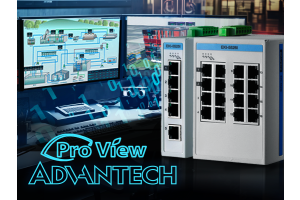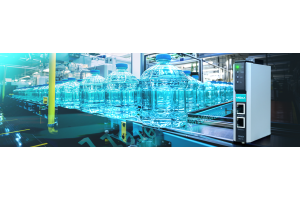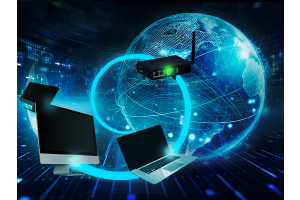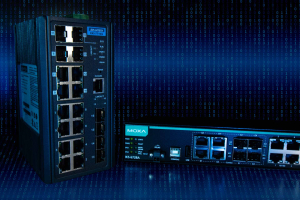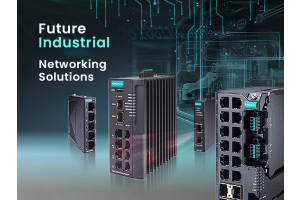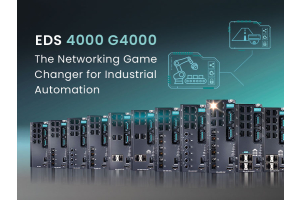We use cookies to make your experience better. To comply with the new e-Privacy directive, we need to ask for your consent to set the cookies. Learn more.
Future-Proofing Networks

The convergence of IT and OT stands as a paramount objective for businesses eager to foster innovation. In today's landscape, industrial networks must undergo a transformative shift to enable the seamless integration of OT and IT systems.
By integrating IT and OT systems, enterprises can harness dispersed data to optimize their technological capacities and revolutionize their operational processes.
Moxa is committed to facilitating this transition, empowering industrial networks to leap into the next generation of networking.
What is the Difference Between IT and OT?
IT - Information Technology
Information technology (IT) serves as the fundamental infrastructure for any modern organization. It plays a crucial role in overseeing, handling, and safeguarding essential operations such as email communication, financial management, human resources, and various other applications both within the data center and across cloud platforms.
OT - Operational Technology
On the other hand, operational technology (OT) serves the purpose of linking, supervising, managing, and securing an organization's industrial operations. Sectors like manufacturing, mining, oil and gas, utilities, and transportation heavily rely on OT for smooth functioning. Within the realm of OT, one can find an array of vital components including robots, industrial control systems (ICS), Supervisory Control and Data Acquisition (SCADA) systems, programmable logic controllers (PLCs), and computer numerical control (CNC) machines.
Furthermore, operational technology extends beyond the confines of traditional industrial settings, manifesting in environments like warehouses, parking lots, and highways. Diverse examples of OT in these contexts encompass ATMs, kiosks, connected public transport systems including buses and trains, service fleets, weather stations, and infrastructure facilitating electric vehicle charging management within cities.
Summary
A fundamental distinction between IT and OT lies in their primary focuses. IT predominantly handles the front-end informational activities of an organization, whereas OT is primarily concerned with the back-end production processes, particularly the machinery involved.
How do OT and IT Networks Differ?
OT and IT network infrastructures share similarities in their core components, encompassing switches, routers, and wireless technologies. Consequently, the adoption of IT's established network management and security controls can significantly benefit OT networks, fostering a robust foundation built on years of expertise and diligence.
Form factor: OT network devices are designed in smaller, modularized forms, facilitating diverse mounting options including rail, wall, light poles, vehicles, and even integration within other equipment.
Hardening: In demanding industrial environments, OT network infrastructure often requires ruggedization to withstand harsh conditions. Resilience against shock, vibration, water, extreme temperatures, and corrosive elements becomes paramount.
Network interfaces: Depending on specific operational requirements, OT devices might integrate diverse networks like LoraWAN or WiSun to connect various industrial IoT (IIoT) devices.
Protocols: OT network devices serve to connect IoT sensors and machinery, necessitating support for communication protocols uncommon in conventional IT networks. Hence, industrial networking solutions must accommodate a wide spectrum of protocols, including Modbus, Profinet, and the Common Industrial Protocol (CIP). These distinctions underscore the unique demands and considerations for deploying robust and efficient OT networks in industrial settings.
What Does IT and OT Mean for Cyber Security?
In any computing environment, safeguarding against cyber threats is paramount. Computer systems confront a broad spectrum of potential cybersecurity risks, necessitating robust protective measures across both IT and OT domains.
Yet, the distinctive nature of OT environments renders them particularly susceptible to cyber threats. Often characterized by long-lived systems with infrequent updates, these environments are more prone to harbor software vulnerabilities that malicious actors could exploit.
Simultaneously, these systems are tasked with maintaining high levels of availability and overseeing critical infrastructure, amplifying the potential ramifications of a cybersecurity breach. A successful cyberattack could lead to operational disruptions or even jeopardize health and safety, given these systems' capacity to interact with the physical world.
As the convergence of IT and OT environments intensifies, the necessity for comprehensive OT security monitoring and management becomes increasingly critical. Relying solely on the concept of an "air gap" to shield OT systems is no longer sufficient. Organizations must establish robust protocols to detect and thwart potential attacks before they can compromise these vulnerable systems. This proactive approach is crucial in upholding the resilience and integrity of industrial operations.
Challenges in Future-Proofing Networks
The vision of a unified, converged IT/OT network holds the promise of heightened efficiency, enhanced system reliability, and a streamlined network structure, all of which contribute to lowering the Total Cost of Ownership (TCO). Some trailblazing technologies, such as Time-Sensitive Networking (TSN), are already being pioneered by industry leaders in pursuit of this compelling objective.
While this vision might appear distant to many businesses, the gradual upgrade of network infrastructure to align with planned transformation needs represents a pragmatic approach for numerous enterprises.
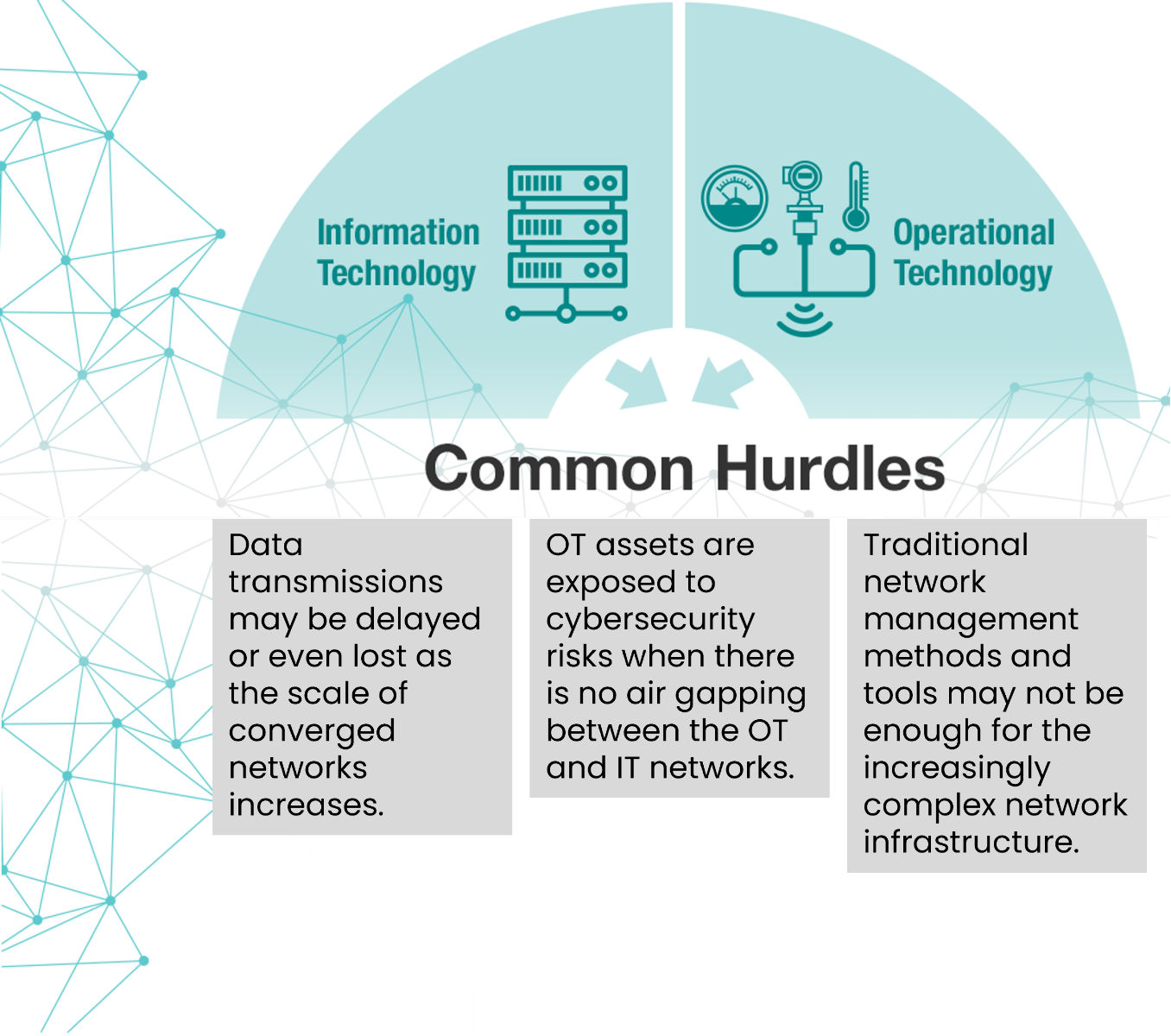

MXview One Network Management Software
Moxa MXview One, an advanced network management software tailored for overseeing and troubleshooting industrial network devices.
This cutting-edge platform allows seamless discovery and monitoring of SNMP/IP devices across various subnets, enabling comprehensive management through a user-friendly web browser interface, accessible locally or remotely from any location.
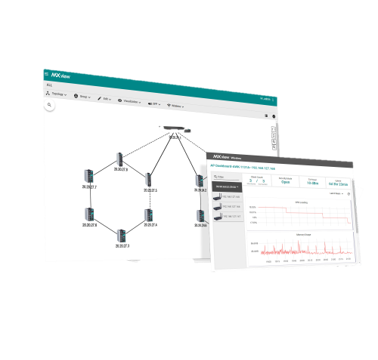

MXview One Wireless add-on
Enhance your wireless network monitoring and issue resolution with the MXview One Wireless Add-on Module. Seamlessly integrated with MXview One, this module efficiently supports up to 200 wireless access points (APs) and clients, providing real-time insights into crucial network metrics like client roaming status, signal-to-noise ratio (SNR), and noise level.
Benefit from immediate alerts regarding wireless device issues, while leveraging comprehensive diagnostic capabilities to swiftly identify and resolve underlying network challenges.


MXview One Power add-on
Optimize your power substation network management with the MXview Power Add-on Module, tailored to facilitate seamless monitoring and issue resolution within the IEC 61850 standard-compliant infrastructure. This feature-rich module supports switches equipped with the PRP/HSR function, offering comprehensive visualization capabilities. Effortlessly oversee Intelligent Electronic Devices (IEDs) via the MMS protocol, enabling efficient status monitoring and control.
With a keen focus on critical packet analysis, including GOOSE events such as GOOSE Timeout and GOOSE Tampered, MXview Power ensures proactive identification of power device issues and swift root-cause analysis, streamlining troubleshooting for enhanced operational efficiency.


Edge-to-Core Networking
Moxa provides the tools for establishing a dependable network infrastructure to safeguard your network's future, ensuring effortless data connectivity and integration from the edge to the core.
Security-Hardened Networking
Moxa's industrial Ethernet products are designed around the embedded secure DNA principle, aligning with the IEC 62443 standard. This approach forms sturdy foundations for secure networks. The multi-layered defense strategy not only safeguards your network through secure segmentation and threat prevention but also offers the convenience of real-time security monitoring and swift responses to cyber threats.
Centralized Network Management
With a complete, real-time view of your industrial networks, you can efficiently oversee devices across various network layers and enhance operational efficiency and uptime throughout all stages of network deployment, management, and maintenance




